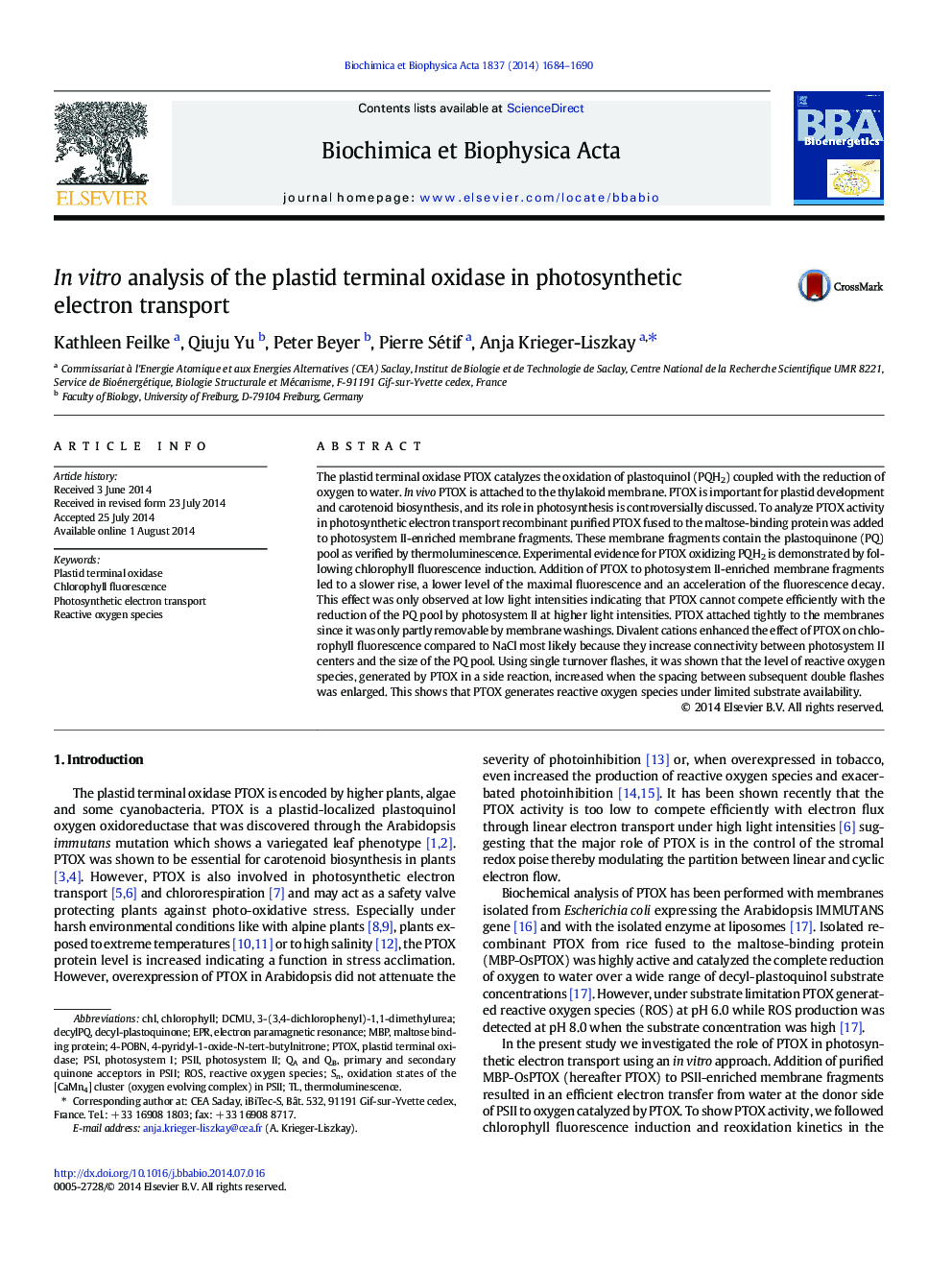| Article ID | Journal | Published Year | Pages | File Type |
|---|---|---|---|---|
| 10795427 | Biochimica et Biophysica Acta (BBA) - Bioenergetics | 2014 | 7 Pages |
Abstract
The plastid terminal oxidase PTOX catalyzes the oxidation of plastoquinol (PQH2) coupled with the reduction of oxygen to water. In vivo PTOX is attached to the thylakoid membrane. PTOX is important for plastid development and carotenoid biosynthesis, and its role in photosynthesis is controversially discussed. To analyze PTOX activity in photosynthetic electron transport recombinant purified PTOX fused to the maltose-binding protein was added to photosystem II-enriched membrane fragments. These membrane fragments contain the plastoquinone (PQ) pool as verified by thermoluminescence. Experimental evidence for PTOX oxidizing PQH2 is demonstrated by following chlorophyll fluorescence induction. Addition of PTOX to photosystem II-enriched membrane fragments led to a slower rise, a lower level of the maximal fluorescence and an acceleration of the fluorescence decay. This effect was only observed at low light intensities indicating that PTOX cannot compete efficiently with the reduction of the PQ pool by photosystem II at higher light intensities. PTOX attached tightly to the membranes since it was only partly removable by membrane washings. Divalent cations enhanced the effect of PTOX on chlorophyll fluorescence compared to NaCl most likely because they increase connectivity between photosystem II centers and the size of the PQ pool. Using single turnover flashes, it was shown that the level of reactive oxygen species, generated by PTOX in a side reaction, increased when the spacing between subsequent double flashes was enlarged. This shows that PTOX generates reactive oxygen species under limited substrate availability.
Keywords
Related Topics
Life Sciences
Agricultural and Biological Sciences
Plant Science
Authors
Kathleen Feilke, Qiuju Yu, Peter Beyer, Pierre Sétif, Anja Krieger-Liszkay,
